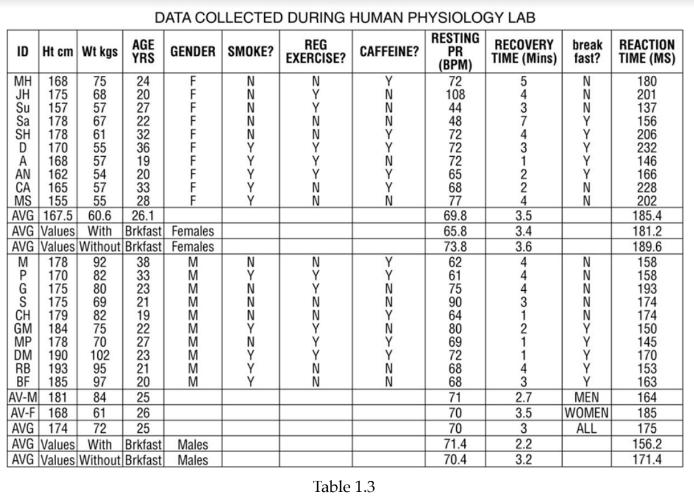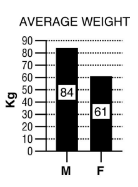The C cells of the thyroid gland produce
A) thyroxine.
B) TSH.
C) calcitonin.
D) PTH.
E) triiodothyronine.
C
You might also like to view...
Which of the following is FALSE? Mammalian hemocytes are involved in
A) Nutrient transport. B) Phagocytosis. C) Immune defense. D) Hormone secretion.
Match the following:
A) Conduction deafness B) Otitis media C) Night blindness D) Glaucoma 1) A condition that can result from a deficiency of vitamin A. 2) A condition of deafness that may result from otosclerosis. 3) An inflammation of the lining of the middle ear. 4) A condition often leading to blindness due to increased intraocular pressure.
Following is a table of data collected from one section of an 8 A.M. physiology lab. There were 20 students present, 10 men and 10 women. Information collected from the students included their height, weight, age, and resting pulse rate. In addition, the students were surveyed to see if they smoked cigarettes, considered themselves "regular exercisers," if they had consumed caffeine the morning
of the lab, and if they had eaten breakfast that day. A "y" or "n" (yes or no) was recorded to indicate their answers. Each student did "jumping jacks" for 5 minutes and recorded the time required to regain their resting heart rate, which is listed on the table as "recovery time." Finally, each student participated in an exercise designed to measure their reaction time (in milliseconds) in catching an object dropped by a lab partner according to specified criteria. Use this table to answer the following questions. Ignore statistical problems caused by small sample size, and so on.
You are doing an experiment to determine if caffeine consumption affects reaction time.
A. Which is the dependent variable?
B. Which is the independent variable?
C. Briefly describe some ways you might manipulate the independent variable.
D. Name three stimuli you could use, and how you might measure reaction time for each.
E. Write an appropriate hypothesis for this study.
F. You compute the following average values from your experiment. What would be a logical conclusion for
these data?
Average caffeine consumer's reaction time: 400 ms
Average noncaffeine consumer's reaction time: 650 ms
G. Sketch a simple graph to convey these results to your classmates. What kind of graph did you choose?
Why? Which variable did you plot on the x-axis? Which one did you plot on the y-axis? Why?
H. Do the results of this experiment support the hypothesis you chose?


Some activities performed by the muscular and nervous systems are not directed toward maintaining homeostasis
Indicate whether the statement is true or false